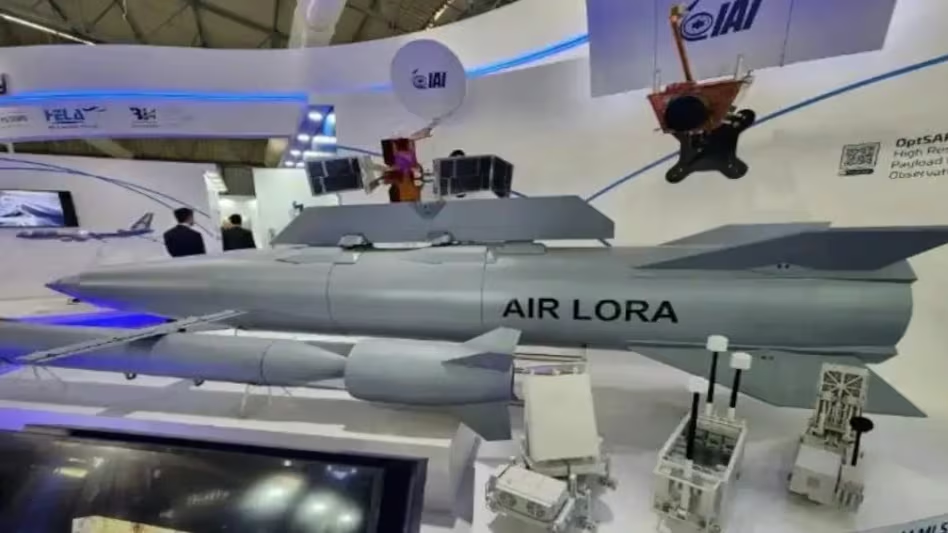India Eyes Israeli LORA Missile: A Strategic Addition Beyond BrahMos
- MGMMTeam

- Jul 10
- 4 min read
Introduction: A New Contender in India’s Strike Arsenal
As India sharpens its military capabilities amid rising regional tensions, the Indian Air Force has turned its attention to Israel’s cutting-edge LORA missile system. Despite possessing the highly regarded BrahMos supersonic cruise missile, India is now evaluating the integration of the air-launched version of LORA (Long-Range Artillery) developed by Israel Aerospace Industries (IAI). This development has stirred curiosity: why would India invest in another long-range missile when BrahMos already serves that purpose? The answer lies not in replacement, but in complementarity, operational diversity, and strategic adaptability.

What is LORA?
LORA is a theater-class quasi-ballistic missile capable of precision strikes at ranges between 90 km and 430 km. Originally developed for land and sea platforms, the air-launched variant of LORA was unveiled in June 2024 and immediately attracted attention from major defense powers, including India. Weighing approximately 1,600 kilograms, with a 5.2-meter body and a 570-kg warhead, the missile is designed for high-speed delivery with pinpoint accuracy. It travels at supersonic speeds of around Mach 5 (6,174 km/h) and uses a high, lofted trajectory that makes interception by radar and air-defense systems extremely difficult.
What distinguishes LORA is not just its range, but its advanced targeting systems. It uses a combination of GPS and Inertial Navigation Systems (INS), along with terminal seekers like electro-optical or TV-based systems for last-phase guidance. With a Circular Error Probable (CEP) of under 10 meters, LORA offers a degree of accuracy that can rival some of the most sophisticated Western missile systems.
Why LORA, When India Has BrahMos?
The acquisition of LORA does not signal redundancy but rather strategic foresight. While BrahMos is a supersonic cruise missile that flies at low altitudes—often skimming the sea or terrain to evade detection—LORA’s ballistic, high-arching path offers an entirely different strike profile. BrahMos is ideally suited for striking naval targets or ground installations in coastal areas. In contrast, LORA’s high-altitude lofted trajectory is perfect for targeting well-defended inland structures, such as enemy airbases, missile silos, communication hubs, and deeply buried bunkers.
Another major advantage lies in payload integration and platform compatibility. The BrahMos missile is large and heavy, requiring extensive modifications to the aircraft that carry it—currently, only India’s Su-30MKI fleet is capable of launching BrahMos. LORA, on the other hand, is lighter and more versatile, allowing multiple missiles to be mounted on a single aircraft. A Su-30MKI can potentially carry up to four LORA missiles, significantly enhancing its strike volume per sortie.
Operational Significance and Recent Context
India’s growing interest in LORA comes at a time when its regional adversaries are rapidly expanding their own missile arsenals. The successful deployment of Rampage missiles during Operation Sindoor in May 2025 proved India’s readiness to adopt foreign technology for precise, standoff-range attacks. However, Rampage is more of a tactical weapon, limited in range and warhead capacity. LORA fills the gap between tactical precision and strategic depth.
In real-world scenarios, LORA could be launched from Indian airspace to strike targets as far as Karachi, Skardu, or even Chinese military infrastructure near the Line of Actual Control (LAC), without crossing into hostile territory. This allows Indian forces to engage critical targets while minimizing risk to pilots and aircraft.
Production and “Make in India” Prospects
What makes LORA particularly attractive is its compatibility with India's ‘Make in India’ defense production strategy. In 2023, IAI signed an agreement with Bharat Electronics Limited (BEL) to locally manufacture LORA in India. This includes the potential for technology transfer, localized component production, and eventual export to friendly nations. Given that BrahMos—jointly developed with Russia—faces export restrictions in some markets, LORA could provide a more flexible and globally marketable option for India’s growing defense manufacturing sector.
Additionally, LORA is expected to be more affordable than BrahMos, which currently costs around ₹20–30 crore per unit. This cost-effectiveness, combined with its compact design and quick deployability, makes it an appealing solution for future air-to-surface and standoff attack missions.
Challenges and Roadmap Ahead
While LORA offers an impressive capability set, its integration with Indian aircraft will require comprehensive flight testing under different climatic and operational conditions. The missile's behavior across India’s diverse terrain—deserts, mountains, forests, and coastal areas—will need to be analyzed. Compatibility with the Su-30MKI’s fire-control systems and avionics is another technical challenge.
India is expected to induct its first squadron of air-launched LORA missiles between 2026 and 2027, contingent on final contracts, successful trials, and policy clearances. Once operational, this would significantly elevate India’s long-range strike capabilities, offering a combination of speed, stealth, and flexibility unmatched in its current inventory.
Conclusion: A Strategic Force Multiplier
The interest in LORA is not a reflection of BrahMos' shortcomings, but a testament to India's evolving defense doctrine. As warfare becomes more multidimensional—requiring versatility, stealth, precision, and deep-range engagement—India is diversifying its toolkit. The addition of LORA will offer Indian pilots the ability to strike from longer distances with greater survivability and precision.
With the possibility of local production, technological advancement, and defense export growth, LORA represents more than a missile. It represents India’s ambitions to become a formidable aerospace power and a leading player in the global defense market.
(Sources: OpIndia, Business Today, News18)




Comments